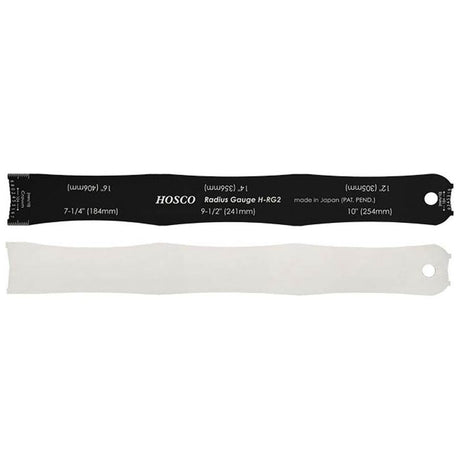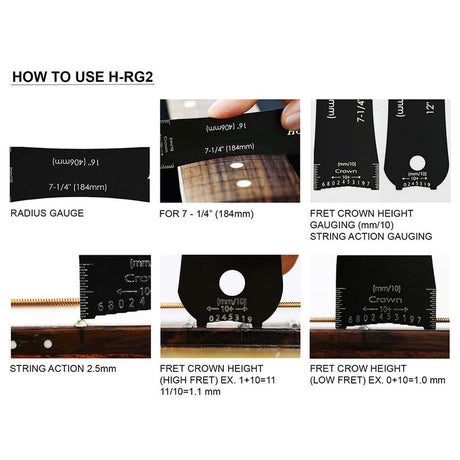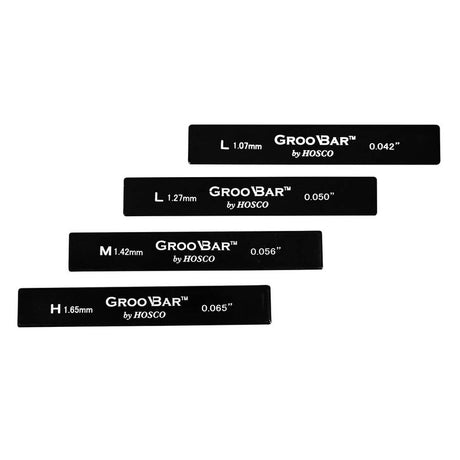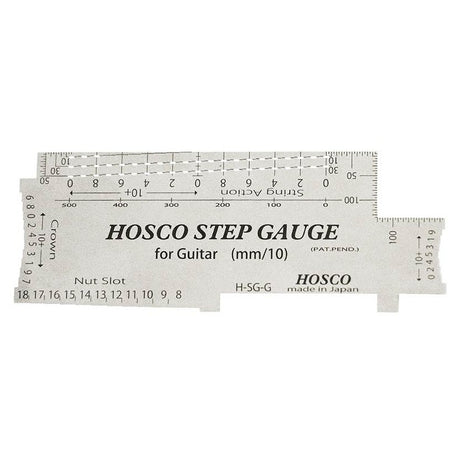A well-tuned guitar not only plays better but also sounds better. For precisely adjusting string height, fretboard radius, and neck curvature , rulers and guitar distance meters are indispensable tools. Whether you're building, repairing, or fine-tuning a guitar: measuring is knowing. In this article, you'll discover which measuring tools you need for professional results.
String height meters: measure exactly how low you can go
A string action gauge measures the distance between the string and the fretboard, usually at the 12th fret. This is crucial for playability. Too high and it plays stiffly, too low and you get fret buzz. These gauges are often made of stainless steel and feature clear metric and imperial scales. Essential for any tuning project.
Neck check rulers: check if the neck is perfectly straight
A slight bow in the neck is normal, but too much or too little relief can cause problems. A neck check ruler , also called a straight edge, is a long, precise ruler that you place across the fingerboard. It checks for bowing, hollows or bumps, and even fret alignment. Some versions even have notched straight edges, allowing you to measure directly on the fingerboard.
Radius meters: for fingerboard and bridge adjustment
A guitar's fingerboard has a specific curvature – its radius . Radius gauges allow you to accurately determine this curvature, allowing you to adjust the bridge saddles and string height accordingly. There are two types: under-string radius gauges (used without removing the strings) and top-of-the-finger radius gauges. Correct radius adjustment prevents string problems and ensures even action across the entire fingerboard.
Fret Check Rulers: Detect Uneven Frets
A fret rocker or mini-ruler is used to check if all frets are level. Measure across three frets at a time; if it wobbles, you know a fret is higher or lower than the rest. Ideal for resolving fret buzz or preparing for fret leveling.
























